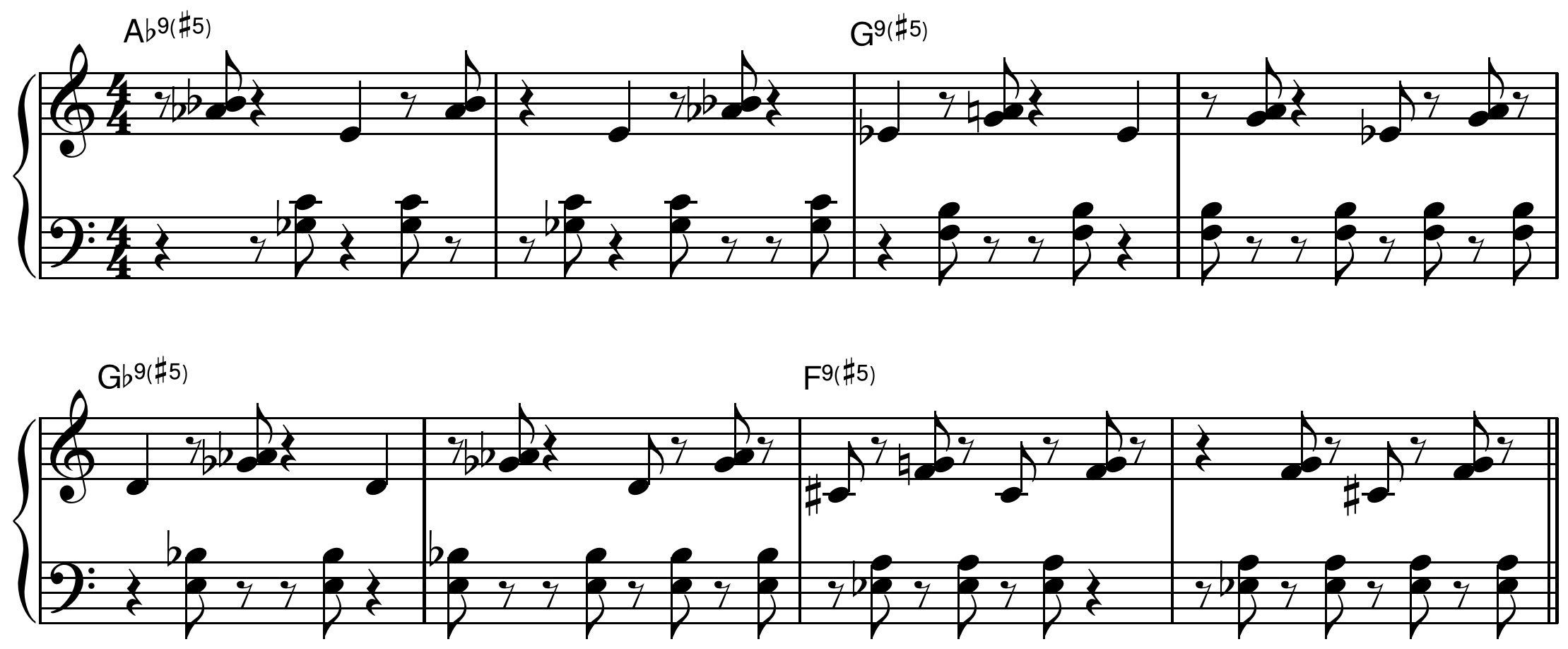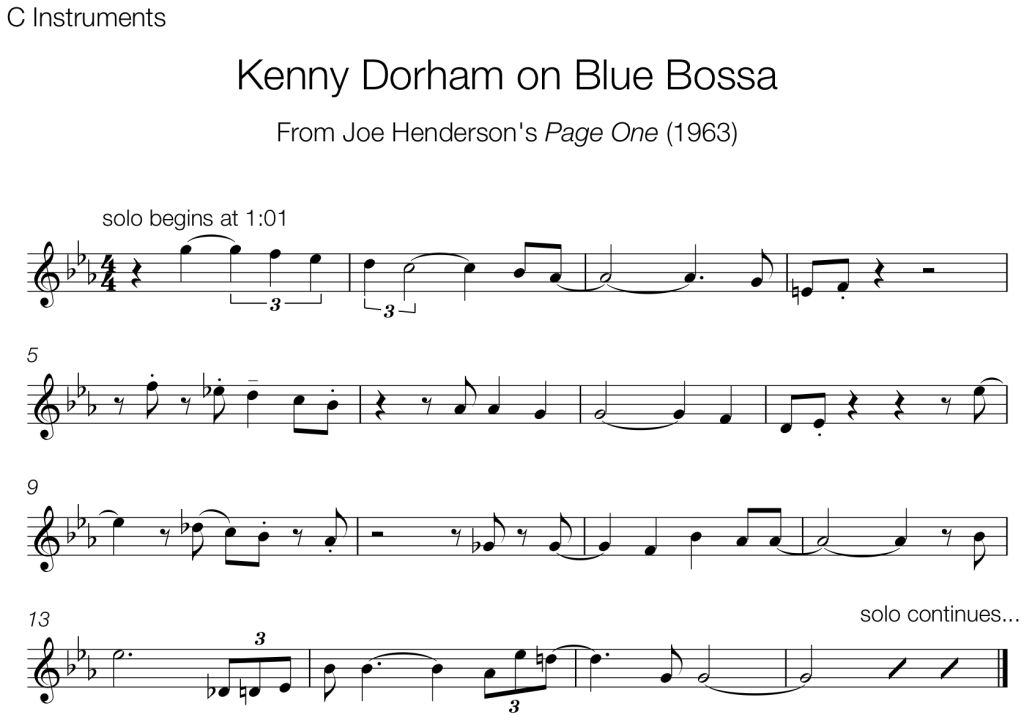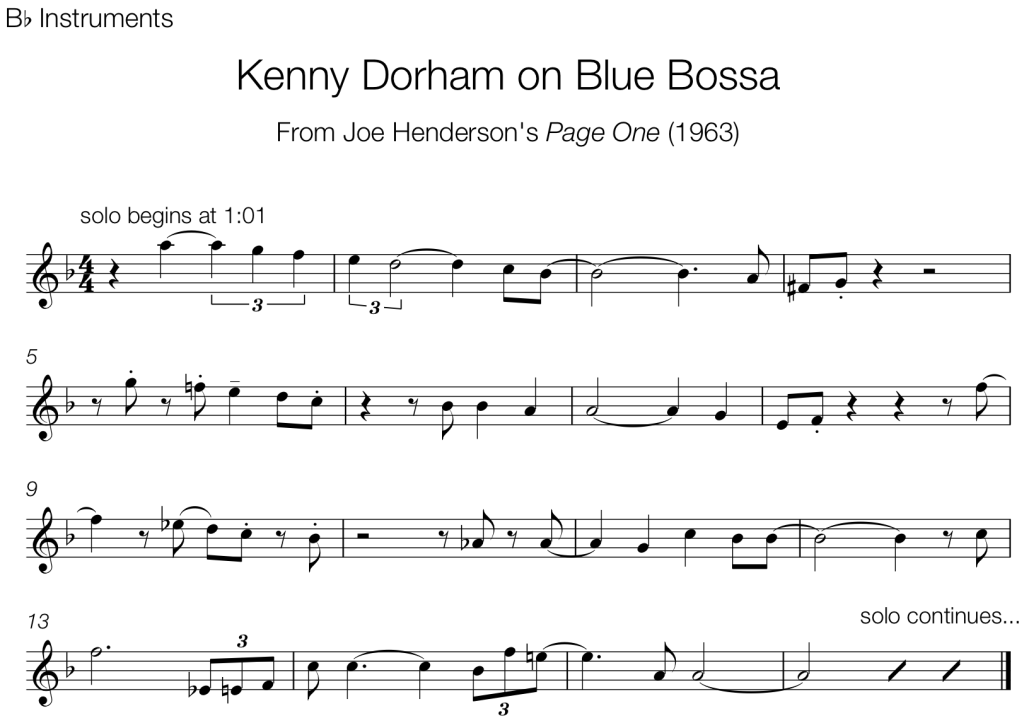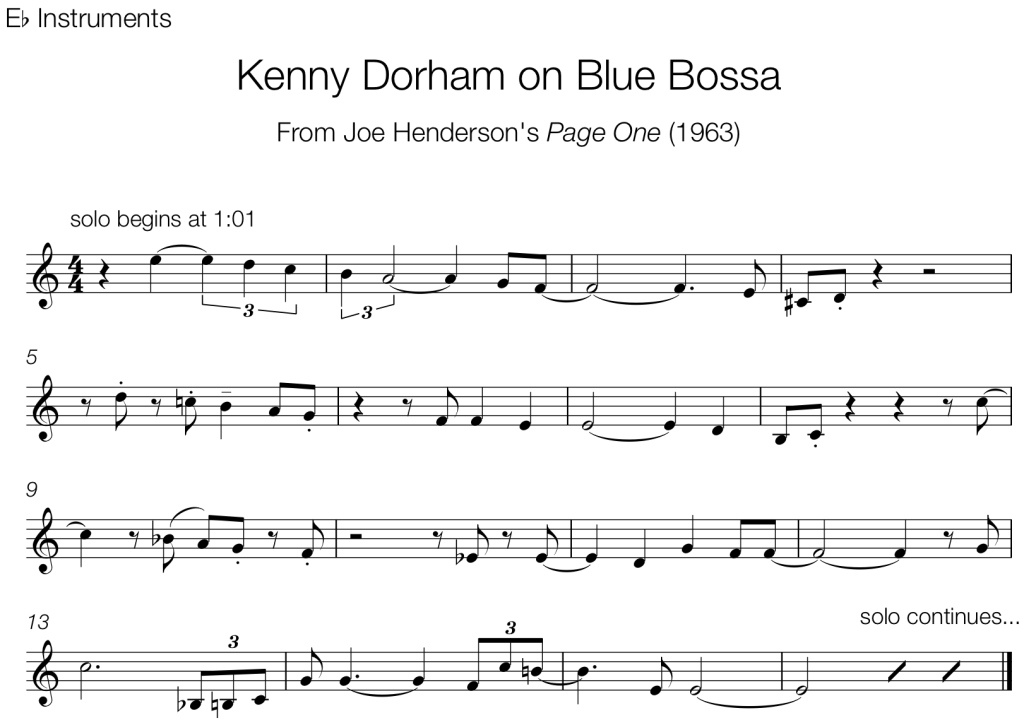The bridge section of the musical form known as “rhythm changes” is a perennial improvisatory playground. The harmony commonly follows a cycle of dominant chords, each resolving down a fifth (or up a fourth), and the tension created by this progression provides fertile ground for melodic inventions.
This week we will look at the the way Bill Evans uses harmony and rhythm to create a unique statement on the bridge of Sonny Rollins’ tune “Oleo.” (This recording is on the album Everybody Dig’s Bill Evans (1958) featuring Sam Jones on bass and Philly Joe Jones on drums).
Harmony
In a typical Bb rhythm changes tune, the bridge begins on D7 and continues to G7, C7, and F7 before resolving back to Bb. Evans takes advantage of the nature of the whole-tone scale and tritone substitution to complete this cycle using a descending half-step motion.

Once you are comfortable with the sound and feel of the harmony, it’s time to move on to the…
Rhythm
The hallmark of developed rhythmic improvisors is the ability to freely cross the estabilished bar lines and still create a musically complete phrase. Bill Evans uses a common technique here that can be understood as a repeated three-beat phrase over several bars of 4/4 time.

The brackets identify the three-beat riff and you can see that it takes three full measures of 4/4 before the pattern begins again on beat one. Evans adds additional rhythmic material for variety, but begins another three-beat phrase in bar 5.
Make sure you can feel these rhythms between the hands before you continue.
Putting It All Together
Here is the complete pattern that Bill Evans plays on the bridge to Oleo. Note that if you learned the rhythm above, the right hand is now split between the higher cluster of two notes and the lower single note.

The moral of this story: never underestimate the power of rhythm in creating unique and exciting musical statements.


